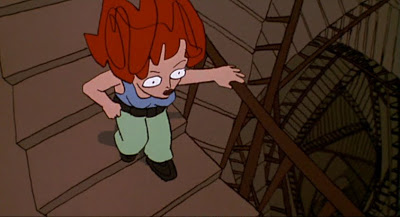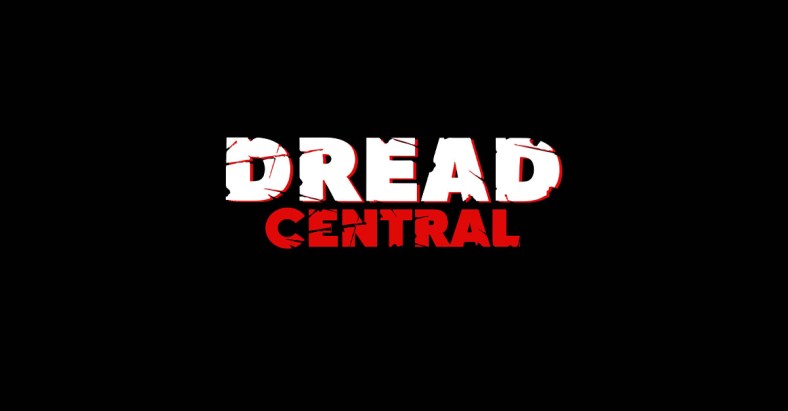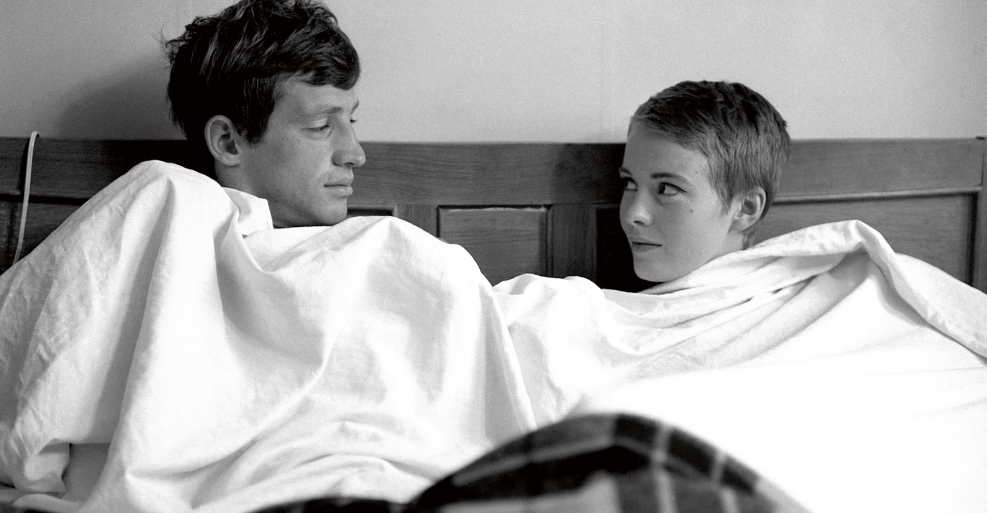

I actually have viewed Run Lola Run before – yet another film that I had the opportunity to see in my high school film class. I decided the first time that I watched it that I didn’t care for it. I didn’t feel attached to the characters the way I like to be and the story felt repetitive…well it IS supposed to be repetitive.
After watching it again my opinion about Run Lola Run has changed very slightly. As an art major I do appreciate the aesthetics of the animation involved. I also do feel that the driving force of the film is important which I believe is the subtly references towards the Berlin Wall and overall history of Germany. I still don’t feel a lot of attachment to the characters. That got me thinking though about how as viewers we tend to take everything about a movie very personally. I too am guilty of this. You may see a movie you don’t like and feel disgusted or insulted that you wasted an hour and a half of your time watching- but then you have to think that someone else “wasted” well over an hour and a half of their time to make the movie in the first place.
Intention is always something I try to remember that is important to any work. After reading this weeks article by Barbara Kosta I do feel like I have truly had to come face to face with the fact that a good film might not necessarily be one that you love. What I think is important about Run Lola Run is that it’s entertaining yes- but it’s not trying too hard to do anything other than to mean something.
Overall I know that a lot of times you read film analyses and it seems like the author is reaching for something that simply isn’t there- or is pulling apart a detail that is so minute that it can’t possibly really mean anything. Kosta’s article however I really feel isn’t “reaching” for anything other than what is right in front of us but is hard to see with the pace of the film. Kosta tells us that time is significant in this film on page one hundred sixty seven- this much is clear and evident, but she also reminds us that place is significant as well “Twyker insists that the film is a Berlin film- a city that is as much in progress as it is a product of the new millennium and globalization” (Kosta, 3).
To me this film was just a reminder to practice what you preach when it comes to appreciating film. Not liking something doesn’t make it bad, boring or unimportant. Run Lola Run is as full of subtleties as it is full of the obvious, and the subtleties are what I appreciate when I watch this film.
I think this sufficiently brings me to the second part of this weeks blog. I have had the opportunity this semester to see so many amazing movies and to learn even more about film history. A couple years ago I had truly considered going to film school. Movies have been (and always will be) something I am passionate about. I HAVE taken film classes before and they continue to be some of my favorite courses to date. To me what is unique and exciting about this course is how much we learned about film history alone in one semester. It has been very fast paced and hard to keep up with at times- but overall I feel like the speed forces you to contextualize every bit of information that you have learned. To be able to understand contemporary film movements you must be able to understand all of the films and film history that came before.
This is why I get frustrated with people who do not like any movie that was made before 1990. You have to take a film class or you simply won’t understand. I will never get tired of yelling at people to go watch Double Indemnity, Rear Window or even The Shining or A Clockwork Orange. There are too many amazing films out there to enjoy for us to be biased towards movies that are flashy, new and most of the time (as of recently) unimaginative.
Either way- despite poor time management and I really did adore this class this semester. Every film we watched was impressive, fun and exciting and I always feel at a loss when a film class comes to an end because I always think ‘What am I going to watch now without someone to suggest good films?’ but then again I guess I shouldn’t complain. For any of you who never watched The Best Years of Our Lives….please do. Although I detest public speaking- if it were not for our presentation assignment I would have never watched this movie. I loved this film so much I shared it with family and friends back home (they all loved it too). It’s easily in my top three of the films that we have watched in this class. Now it’s just time for this class to be over I guess, and I can’t say that I’m not disappointed.








